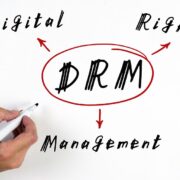
In the digital age, the battle against piracy stands as a paramount challenge for content creators, distributors, and intellectual property rights holders. Digital Rights Management (DRM) emerges as a critical ally in this ongoing struggle, providing a multifaceted approach to safeguarding digital content from unauthorized access and distribution. This article explores the dynamic relationship between DRM and the battle against piracy, shedding light on how robust DRM strategies play a pivotal role in protecting intellectual property in the ever-evolving landscape of digital content distribution.
- Understanding the Pervasiveness of Digital Piracy:
- Challenge: Digital piracy is pervasive, affecting various forms of digital content, including music, movies, software, and more.
- Role of DRM: DRM protected content serves as a frontline defense by implementing access controls, encryption, and other security measures. It acts as a deterrent against unauthorized duplication and distribution of digital assets.
- Encryption as a Shield Against Unauthorized Access:
- Challenge: Unauthorized access to digital content remains a primary concern for content creators.
- Role of DRM: Encryption, a cornerstone of DRM, ensures that only authorized users with the correct credentials can access and consume digital content. This creates a formidable barrier against unauthorized viewing or use.
- Dynamic Watermarking for Traceability:
- Challenge: Identifying the source of pirated content can be challenging.
- Role of DRM: Dynamic watermarking, integrated into DRM strategies, adds an invisible layer to digital content. In the event of piracy, this watermarking aids in tracing the source, empowering content creators to take swift action against infringement.
- Multi-Level Authorization to Combat Unauthorized Distribution:
- Challenge: Unauthorized distribution of digital content poses a threat to revenue streams.
- Role of DRM: Implementing multi-level authorization ensures that only users with specific credentials can access and distribute content. This targeted approach limits the potential for unauthorized distribution, safeguarding the economic interests of content creators.
- Real-Time Monitoring and Response:
- Challenge: Rapid response to piracy incidents is crucial to mitigate damage.
- Role of DRM: DRM video protection solutions often include real-time monitoring capabilities. This allows content providers to detect unauthorized access or distribution promptly, enabling swift response measures to counteract piracy.
- Collaboration with Anti-Piracy Organizations:
- Challenge: Tackling piracy often requires collaboration beyond individual efforts.
- Role of DRM: DRM strategies can be enhanced by collaborating with anti-piracy organizations. Sharing information, resources, and best practices strengthens the collective fight against digital piracy.
- User Authentication to Prevent Unauthorized Sharing:
- Challenge: Unauthorized sharing of login credentials contributes to piracy.
- Role of DRM: Robust user authentication mechanisms, integrated into DRM, deter unauthorized sharing of access credentials. This ensures that only legitimate users can enjoy digital content, reducing the risk of widespread piracy.
- Continuous Evolution of DRM Strategies:
- Challenge: Piracy tactics evolve, requiring adaptive countermeasures.
- Role of DRM: DRM strategies must evolve continuously to counter emerging piracy techniques. Regular updates, patches, and innovations in DRM technology contribute to staying ahead in the battle against piracy.
- Legal Actions Supported by DRM Evidence:
- Challenge: Legal action against pirates requires concrete evidence.
- Role of DRM: DRM provides a trail of evidence through access logs, watermarking, and other security features. This evidence strengthens the legal case against individuals or entities involved in piracy, increasing the likelihood of successful legal actions.
- Public Awareness and Education:
- Challenge: Lack of awareness about the consequences of piracy.
- Role of DRM: DRM initiatives can contribute to public awareness campaigns. Educating users about the legal, ethical, and economic implications of piracy fosters a sense of responsibility, reducing the demand for pirated content.
Conclusion
The battle against piracy is an ongoing struggle that demands a comprehensive and proactive approach. DRM, with its arsenal of encryption, access controls, and traceability features, stands as a formidable ally in this fight. As digital content distribution continues to evolve, robust DRM strategies will play a pivotal role in preserving the integrity of intellectual property and ensuring a fair and sustainable digital landscape.












